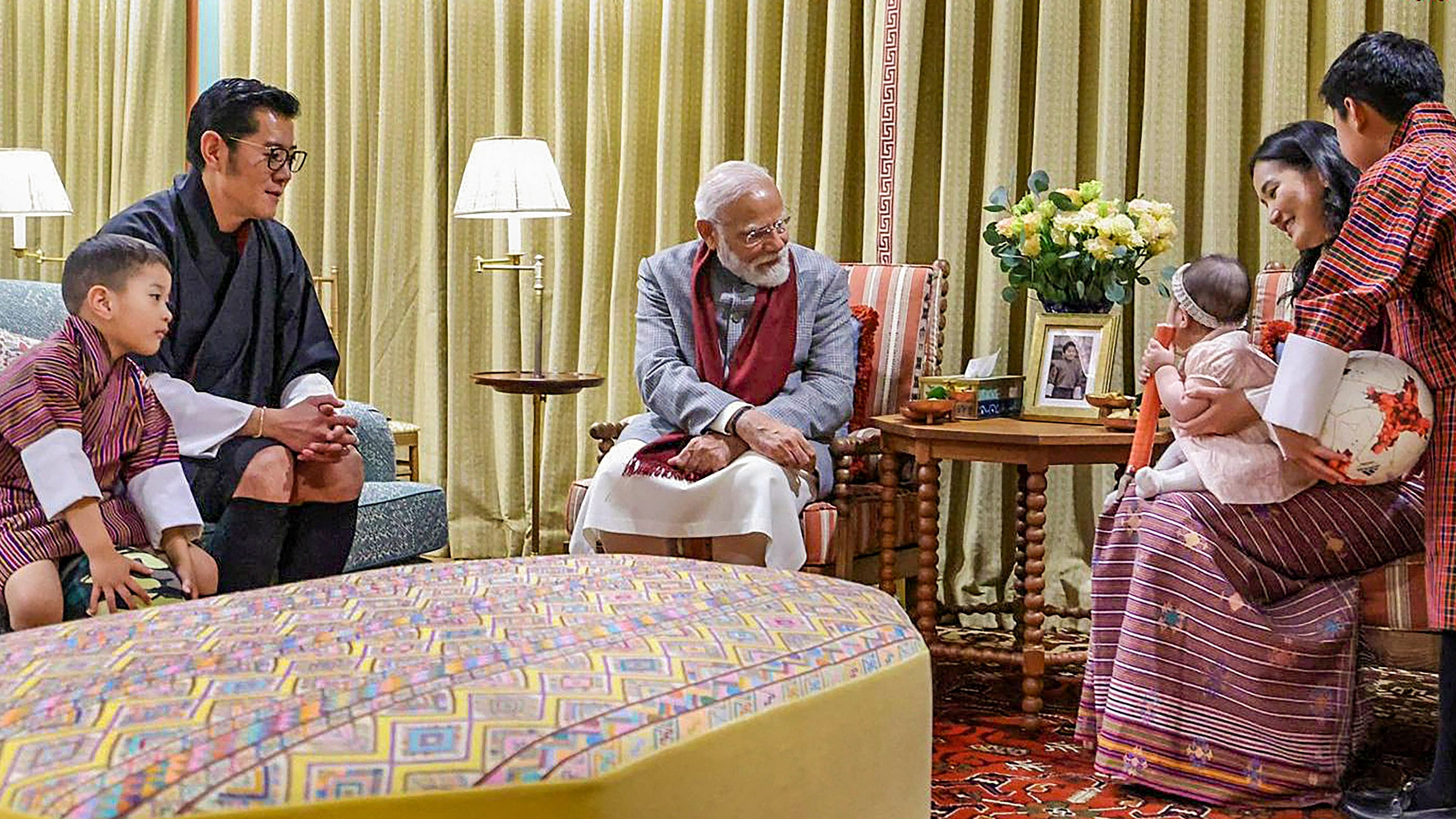
Prime Minister Narendra Modi attends a private dinner hosted by King of Bhutan Jigme Khesar Namgyel Wangchuck (L) and his family at the Lingkana Palace, in Thimphu.
Credit: PTI Photo
As Bhutan’s most-trusted development partner over the years, India’s decision to grant Rs 10,000 crore to the Himalayan country for its five-year plan and for its economic stimulus package is timely. This was Thimpu’s most important ask from India, and Prime Minister Narendra Modi fulfilled it during his visit last week. Modi’s Bhutan visit came days after Prime Minister Tshering Tobgay visited Delhi, his first official trip abroad after being elected in January this year. His election came at a time of an acute economic crisis for the country, crashing its home-grown index of Gross National Happiness. Bhutan’s tourism industry is yet to recover from the blow of the pandemic. A large number of youth – the country’s nearly 800,000 population is South Asia’s youngest -- have been leaving in droves, most of them heading to Australia in search of opportunities. Bhutan hopes that the Gelephu Mindfulness City, envisaged as a fully green economic zone on its border with India at Assam, will rejuvenate the economy and generate jobs. It is looking to the Indian private sector to bring in investments. India is Bhutan’s top trading partner, buying electricity from the country’s hydropower projects that it has helped set up. A new India-Bhutan vision document envisages the development of new energy projects in the fields of hydropower, solar and green hydrogen, including through the participation of Indian entities as strategic partners. India-Bhutan economic co-operation has included steps toward financial digitalisation through India’s RuPay and UPI.
China remains the dragon in the room in the India-Bhutan relationship. Delhi hopes that as Thimpu gets down to the job of settling its boundaries with China, it will keep Indian interests in mind. Last October, the two countries held the 25th round of their boundary talks, after a gap of seven years from the 24th round, though officials of the two sides have been meeting regularly on the demarcation issue. Bhutan’s then Foreign Minister Tandi Dorji led the round in Beijing. Both sides said they wanted an early settlement. The talks are being held in the framework provided by their “Three-Step Roadmap for Expediting the China-Bhutan Boundary Negotiations”, an agreement reached between them in April 2021. China wants to push the demarcation at the India-Bhutan-China trijunction at Doklam from the existing point further south in a way that would give it strategic advantage over the Chicken’s Neck area, India’s narrow link from Siliguri to the North-East.
Modi’s visit, unusual foreign travel during an election, is an indication that India is nervous enough about further developments on this front for it to make a diplomatic push in Bhutan with the new government in Thimpu immediately, complete with largesse and symbolism. PM Tobgay knew the right buttons to push, too, as he gushed about “Modi ki guarantee”. Now, Delhi keeps its fingers crossed for Thimpu’s guarantee.